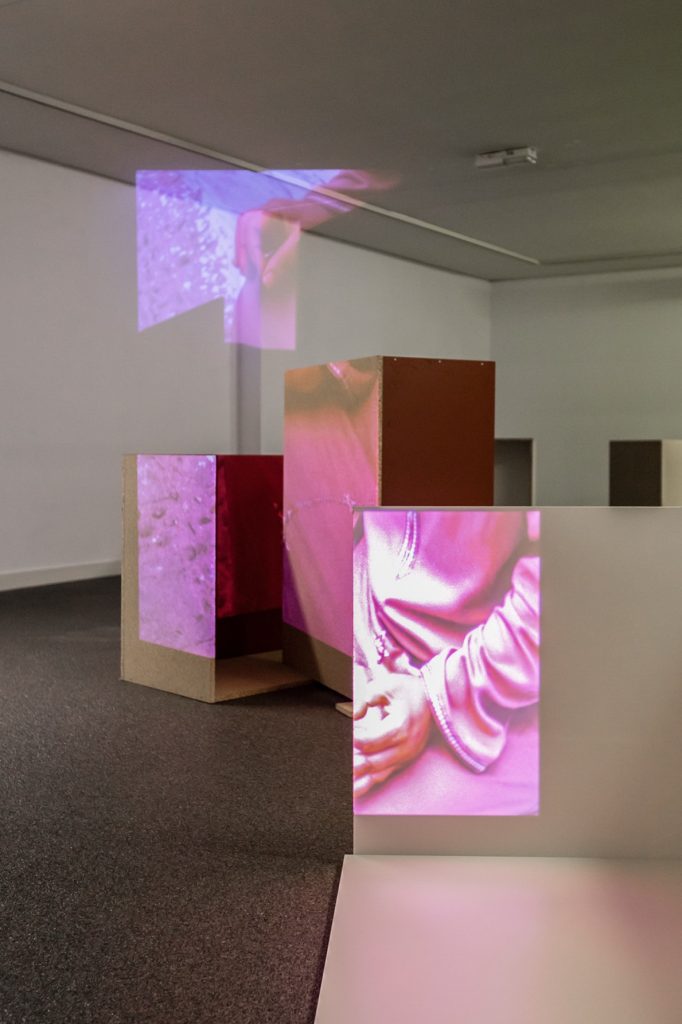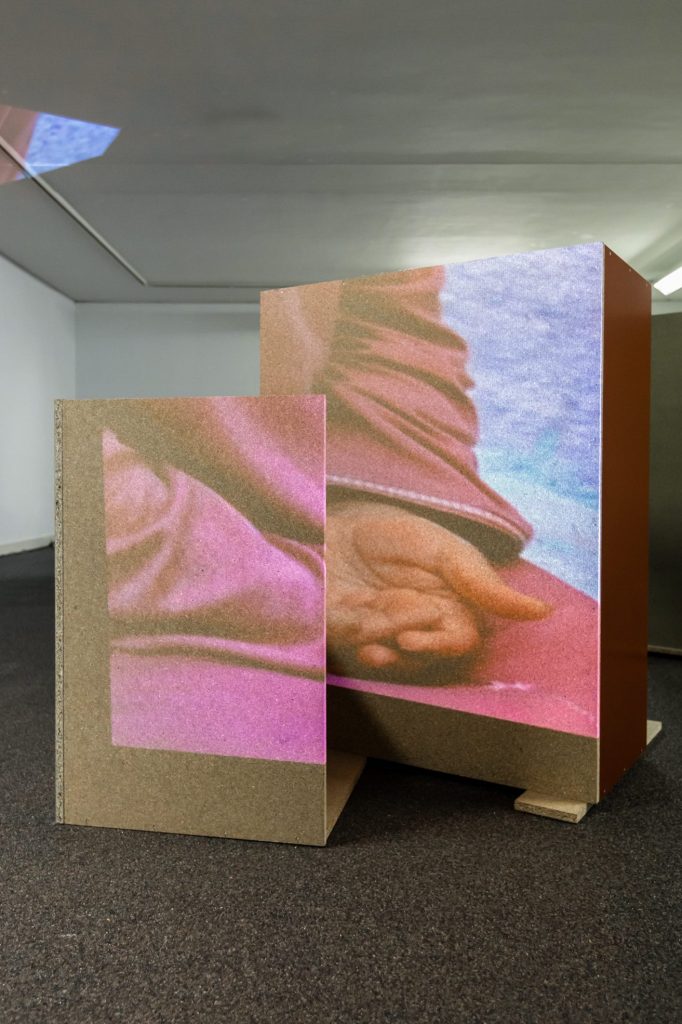There is Nothing Connected, Nothing Distinct
Audiovisual installation in collaboration with Hans Demeuleanere and Volkmar Mühleis, presented at art space Onomatopee in Eindhoven (NL) in August and September 2018. Materials: wooden panels, a voice, 4 video’s.
A book in collaboration with Hans Demeulenaere (design), Volkmar Mühleis (Text ‘Distance To One’s Own Hand’ and the text “There is Nothing Connected, Nothing Distinct”, video stills and installation views.
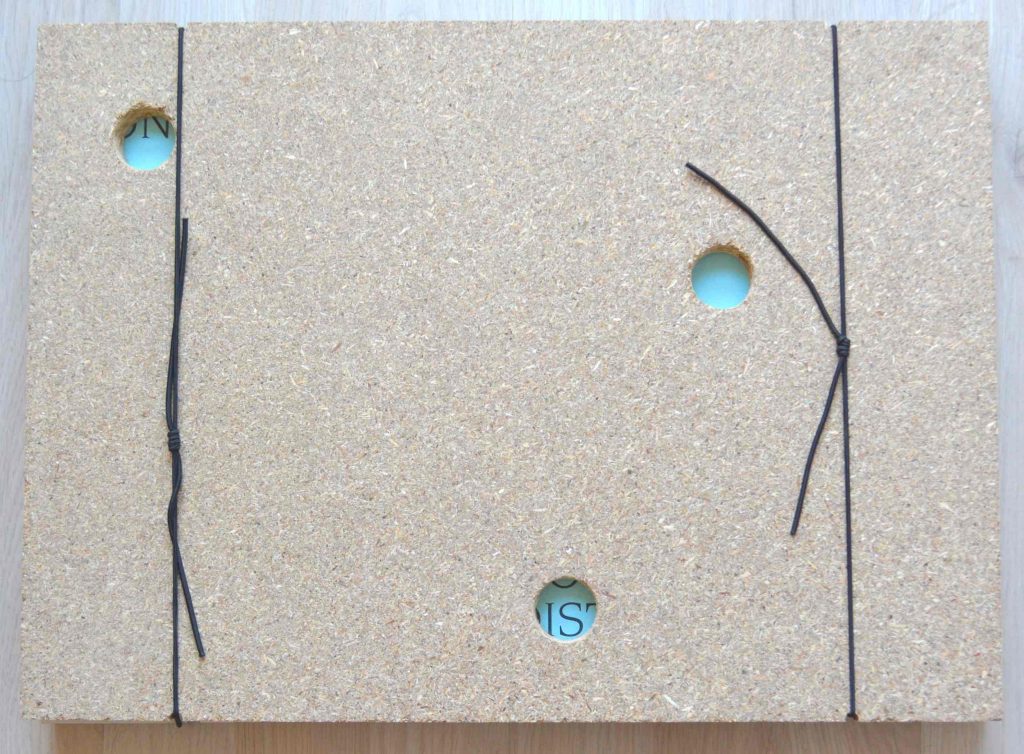
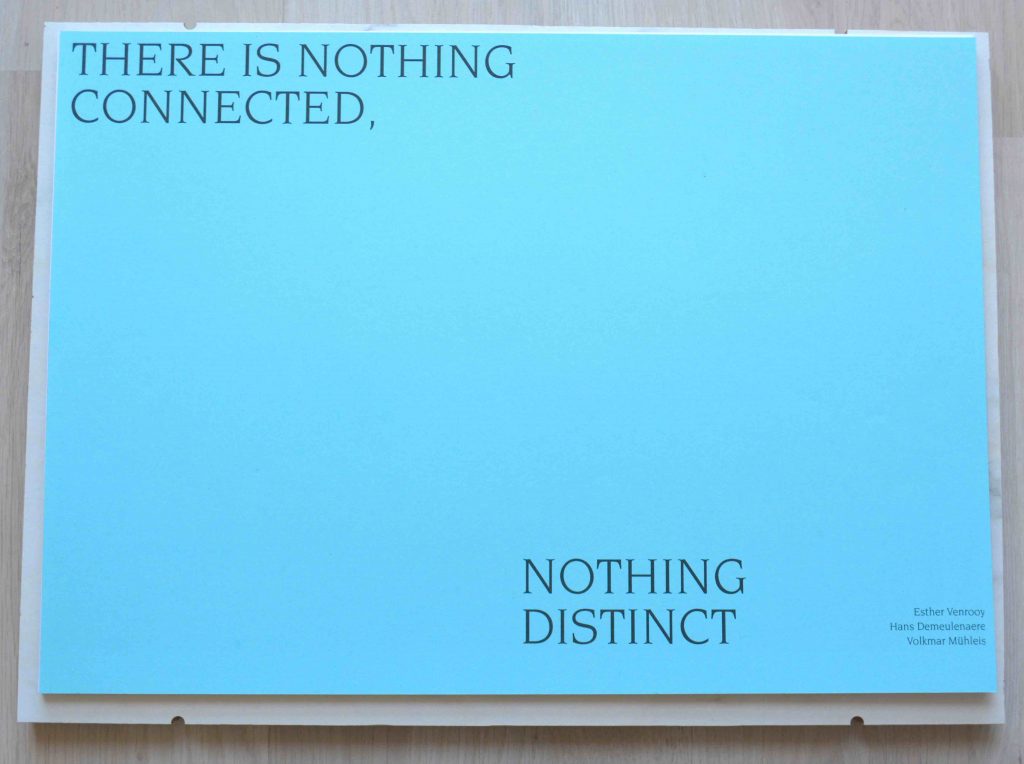
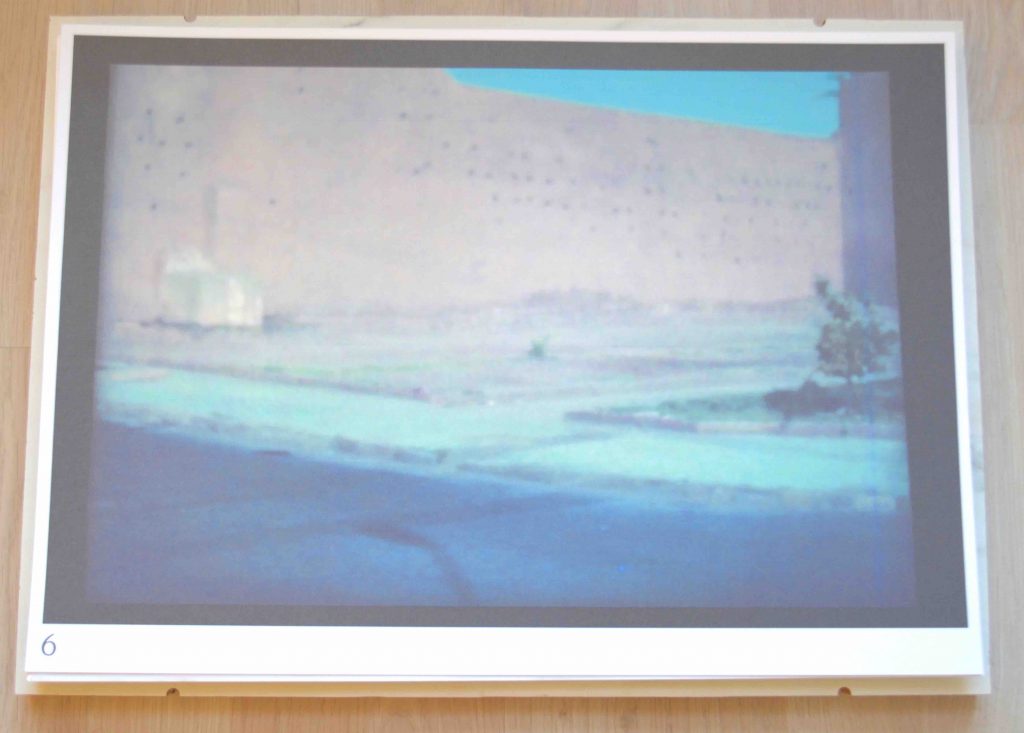
The text The distance to one’s own hand by philosopher Volkmar Mühleis deals with the notion of the giving hand, something Esther is fascinated. Within the visual arts, the idea of giving is central, with the gesture of the artist placed in a noble position. To what extent can we open this gesture towards the idea of receiving? Inspired by Mühleis’s text, Esther Venrooy researches fragmented space and the role of the hand, or the geste, within the visual image. This is all undertaken together with the artist Hans Demeulenaere. They have been working together since 2008, sharing a fascination for the perception of space and the dialectics between their different artistic disciplines. There is Nothing Connected, Nothing Distinct is a new chapter in their collaboration. The aim goes beyond creating a large audiovisual installation as they want to set up a course of performative sculptures and objects; in which sounds and images flow into one other.This experimental set-up responds to the soon to be published Onomatopee book An autobiography in sound in which Esther Venrooy breaks away from traditional notions about sound. While critically reflecting, Venrooy explores this subject through the balancing of her experience as a composer working in both sound and installation art.

Some years ago, I became fascinated by the concept of sound as time, which is echoed in works of other composers and sound artists. For example, American composer Morton Feldman is looking for a way to break with the dominance of form, focusing on ‘time in its unstructured existence’. His idea was to turn time into space, blending the two together such that time disappears, but never reaching the point of stasis or timelessness.


For this exhibition, the first thing I decided was to make a recording of the voice of Volkmar, reading his text, with some small instructions. I asked him to allow all the small sounds of paper rustling and hands moving over a table to be part of the recording. I also asked him to start the recording early so we are able to experience the sound of the room, Volkmar sniffing, murmuring and walking around.
Installation View

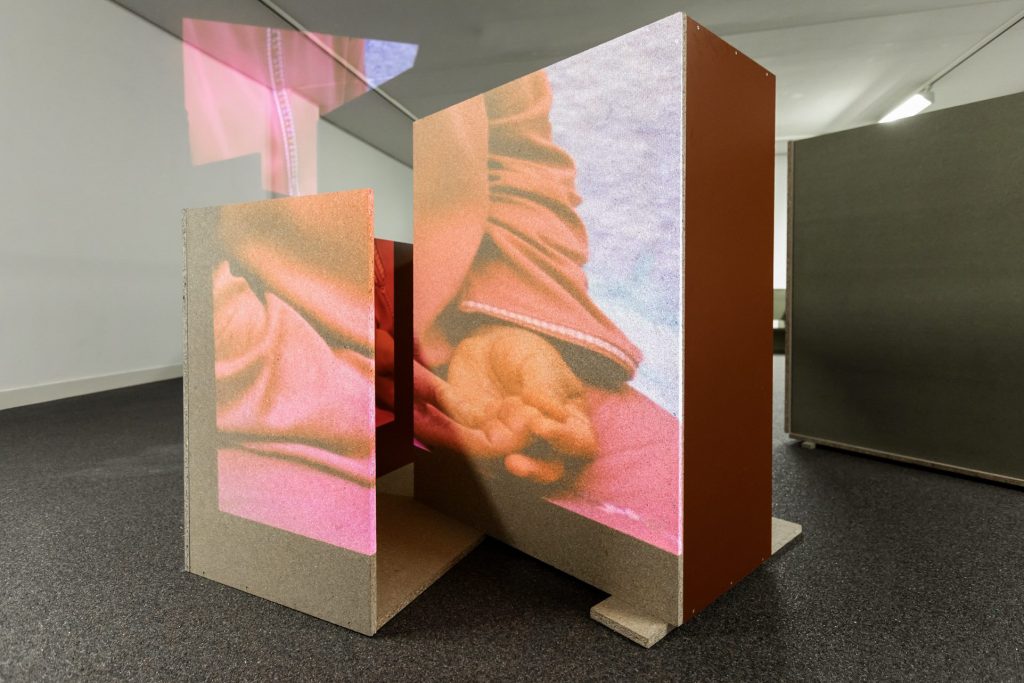
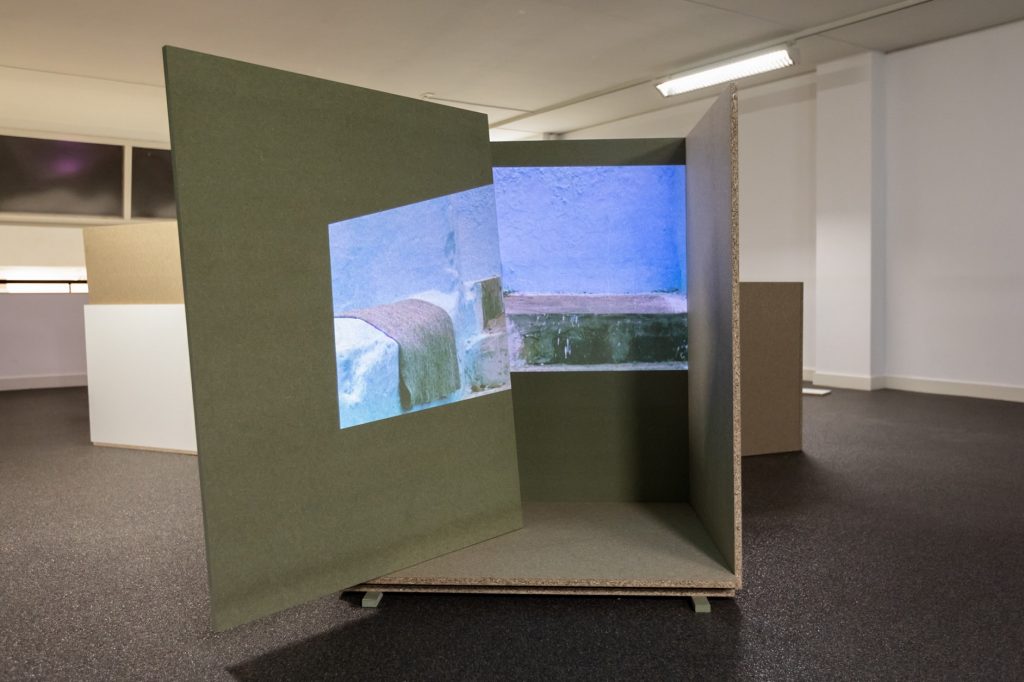
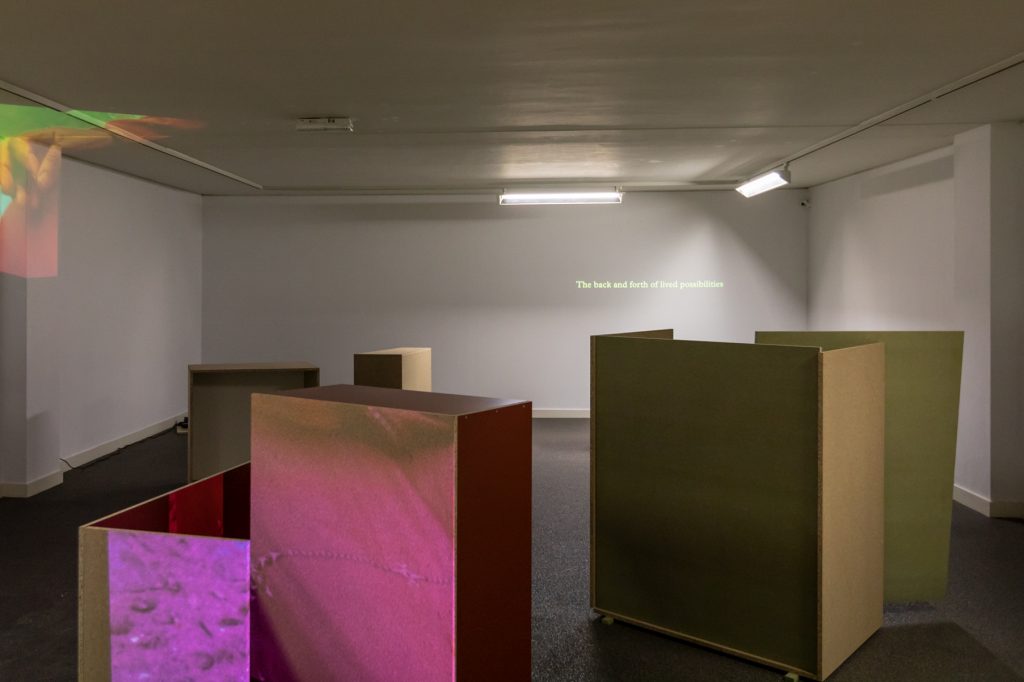
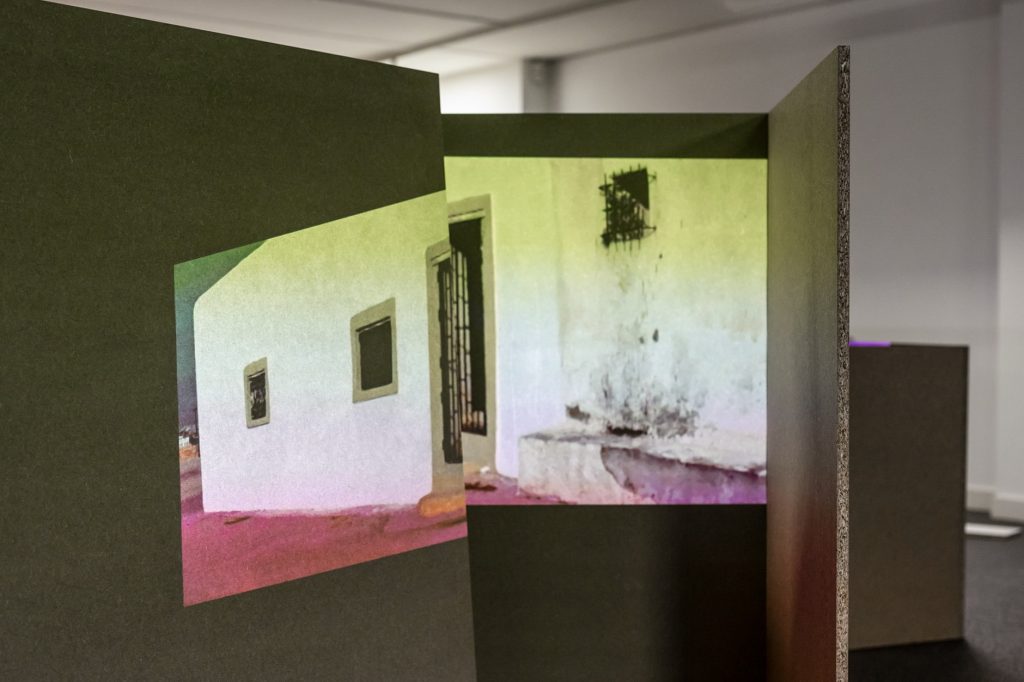
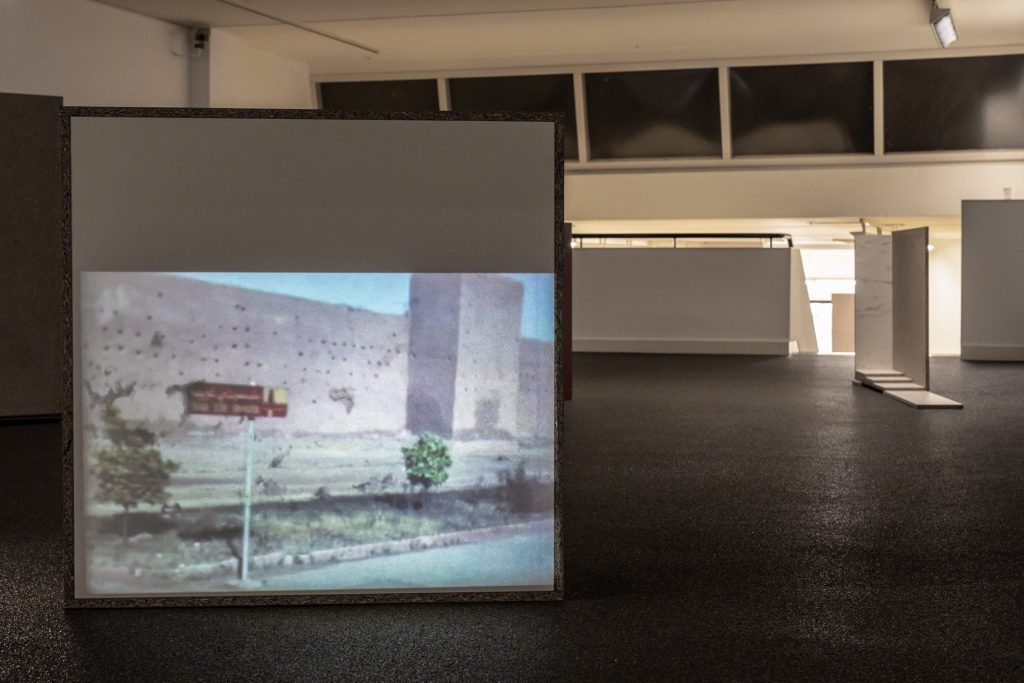
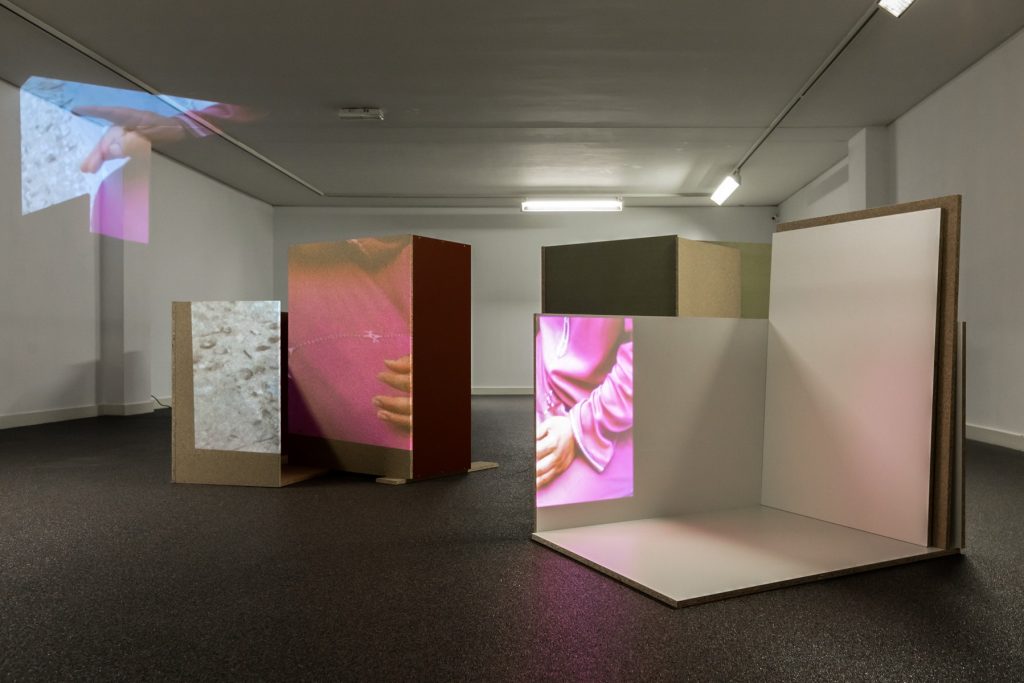

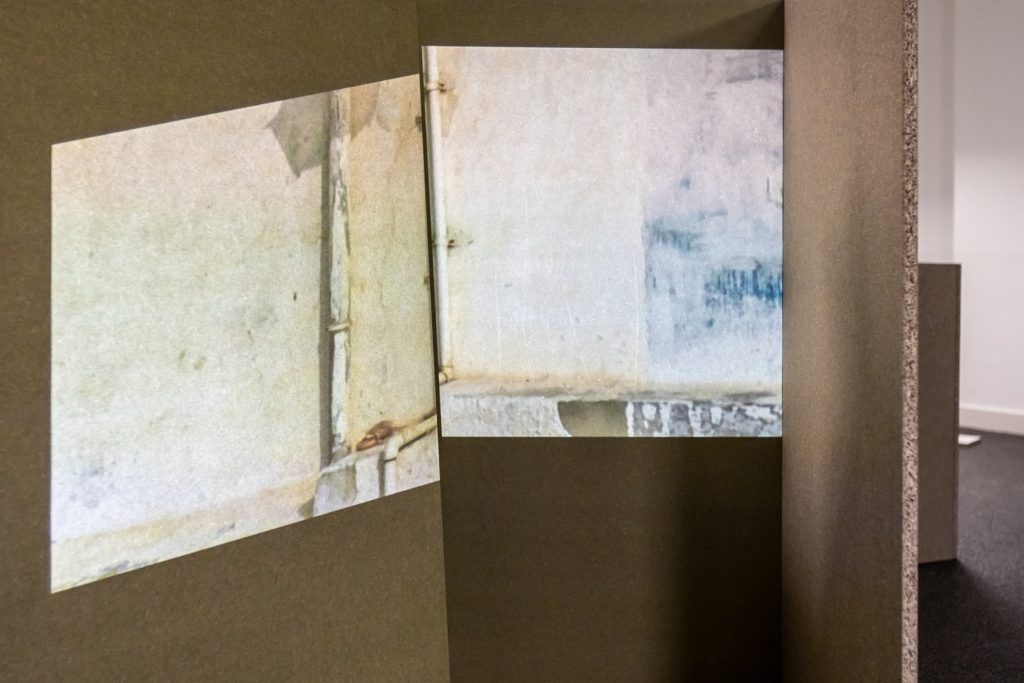
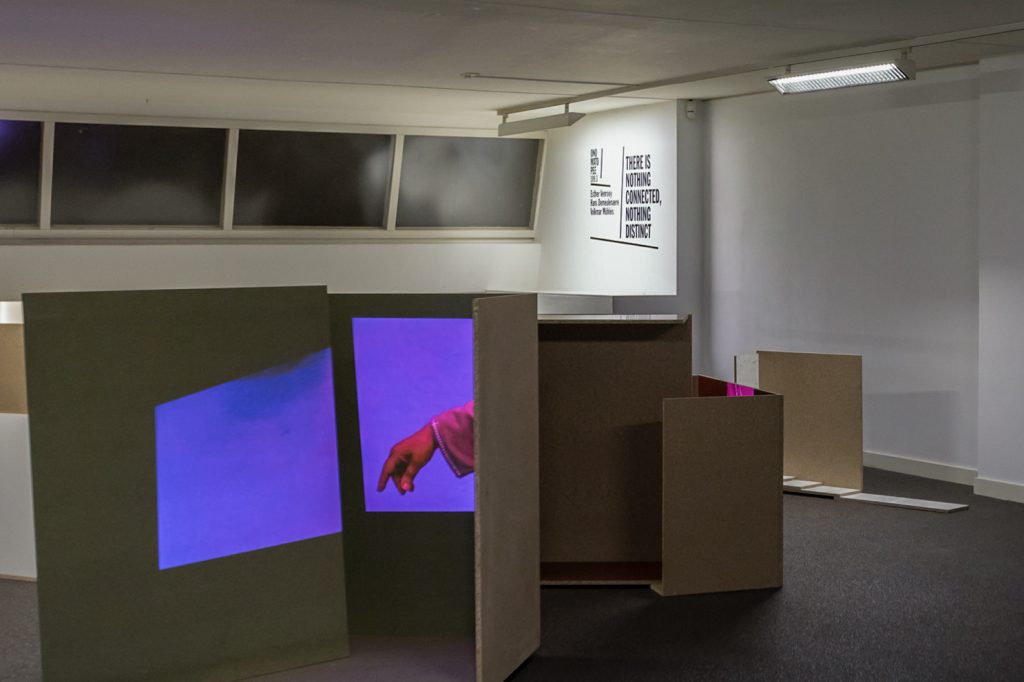
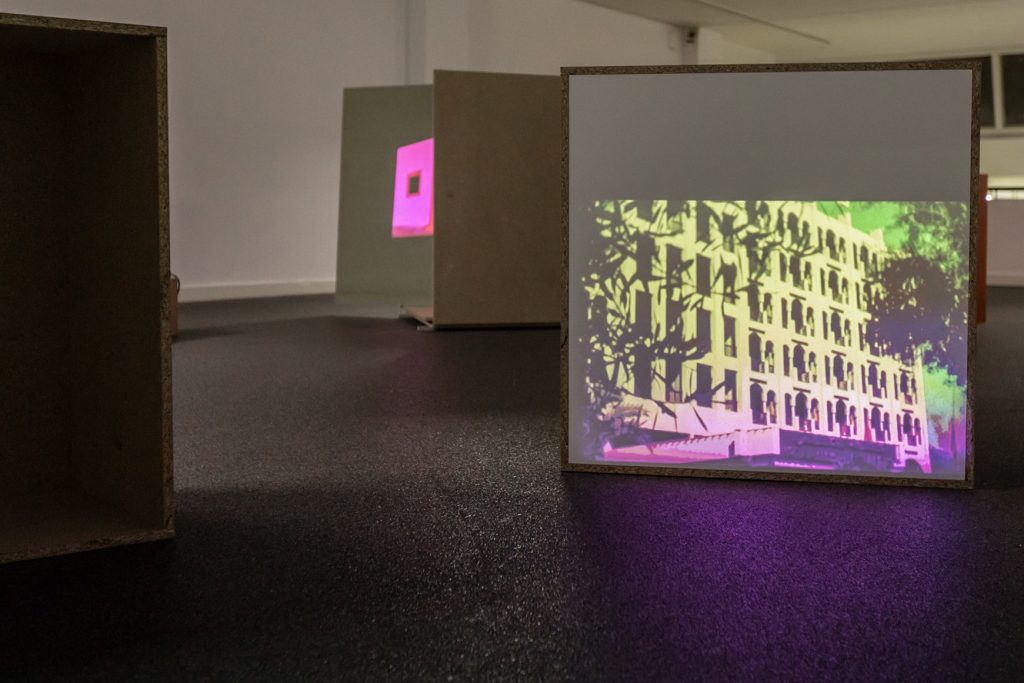
Then I had a meeting with Hans and we talked about creating a scene for the exhibition, a kind of landscape of fragmented boxes, which will carry the images. In our talks and email conversations, it became clear we wanted to work with projection of the images onto the objects. In the video’s, I wanted to capture the experience of “time”, in static shots where it seems nothing is happening. I wanted to share with the viewer “time passing” or to sense time, in the blue environment of the Moroccan city of Chefchaouen. Especially the blue walls of this city creates a surreal experience, where simple objects as plastic bags and floor cloths become protagonists within a theater piece.
